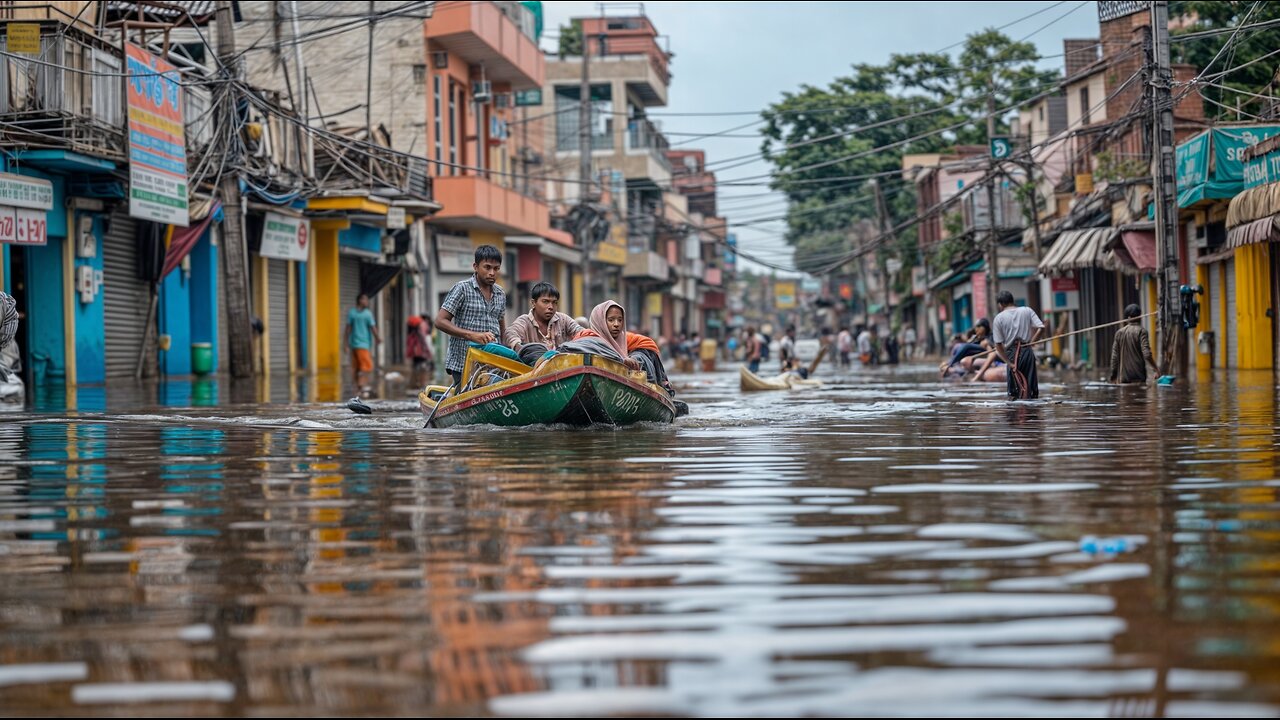Premium Only Content

India NOW! Severe Flood Tragedy: Heavy Rains, Rising Rivers, and Destruction
The Indian state of Assam has been severely affected by floods. Due to abnormally heavy rains, the water levels in the Brahmaputra River and its tributaries have exceeded critical levels, causing widespread flooding in 28 districts of Assam.
Nearly 2.3 million people in 3,446 villages were forced to leave their homes. The hardest hit was the Dhubri district, where more than 750,000 people were affected. It is followed by Cachar and Barpeta districts. Hundreds of relief camps have been set up across Assam to accommodate the displaced. The death toll from storms, floods, and landslides in the state has already reached 78 people, with 66 of them directly due to the floods. Large-scale rescue operations are underway. On July 7 alone, 70 people were rescued.
The floods have caused enormous damage to agriculture, inundating over 68,000 hectares of arable land.
Roads, bridges, and fish ponds across the state have been damaged by the disaster.
Kaziranga National Park, home to the world's largest population of one-horned rhinoceroses, has also been affected by the severe flooding. 114 wild animals have died, including 6 rhinos, marking one of the highest flood-related animal mortality rates in the park in many years.
The Regional Meteorological Center reported that Assam received 12% more rainfall in June than usual.
During the monsoon season, the Brahmaputra River — one of South Asia's largest waterways — and its tributaries often overflow, flooding low-lying areas. However, in recent years, these disasters have become significantly more extensive and prolonged. This is attributed to a combination of hydrological and climatic factors in the region, as well as a lack of effective river management.
What is often overlooked is that the primary factor behind the rapid increase in the frequency and intensity of floods, not only in Assam but worldwide, is the rise in atmospheric moisture associated with global warming.
The good news is that scientists have already developed technology that can quickly and effectively reduce atmospheric moisture while simultaneously cleaning the oceans of microplastics, restoring their natural function as the planet's air conditioner. These measures will rapidly reduce the intensity of natural disasters, particularly abnormal precipitation, storms, and hurricanes. The application of this technology will also provide unlimited clean water to all those in need.
It sounds like science fiction! But it is absolutely possible to implement on a global scale in the very near future, provided there is human will. You can learn more about this in the video: "Water From Air: The Path to Saving Humanity | Popular Science Film."
-
 6:06
6:06
AllatRa TV
14 days agoAustralia NOW! Worst Floods in 60 Years! Extreme Weather Shocks the Nation
701 -
 1:29:31
1:29:31
Glenn Greenwald
5 hours agoGermany's Repressive Speech Crackdown Intensifies; U.S. & Russia Meet in Saudi Arabia and Open Cooperation; Plus: An Amazing Hate Crime in Florida is Buried | SYSTEM UPDATE #408
51.5K34 -
 1:30:48
1:30:48
Redacted News
6 hours agoBREAKING! TRUMP AND PUTIN NEARING PEACE BUT EUROPEAN WARMONGERS TRYING TO STOP IT | REDACTED
129K218 -
 52:40
52:40
Candace Show Podcast
6 hours agoSaturday Night Lively: What Were They Thinking? | Candace Ep 148
111K121 -
 LIVE
LIVE
Man in America
1 hour agoDocumentary: The Money Masters 'How International Bankers Gained Control of America'
492 watching -
 1:10:40
1:10:40
PMG
1 day ago $0.03 earnedTom Hanks Plays a Racist MAGA Supporter On SNL!! UNBELIEVABLE
585 -
 LIVE
LIVE
Adam Does Movies
5 hours agoAsk Me Anything - Live!
254 watching -
 LIVE
LIVE
Flyover Conservatives
21 hours agoFollow the Money: $4.7 Trillion in Government Fraud EXPOSED!; Flu Shots, Fear & Big Pharma Lies—What They DON’T Want You to Know - Dr. Stella Immanuel | FOC Show
467 watching -
 LIVE
LIVE
Anthony Rogers
1 day agoEpisode 354 - Current Events, Weather, and Other Clickbait
93 watching -
 25:10
25:10
Producer Michael
6 hours agoTHE HOTTEST FRAGRANCES FOR 2025!
8.46K